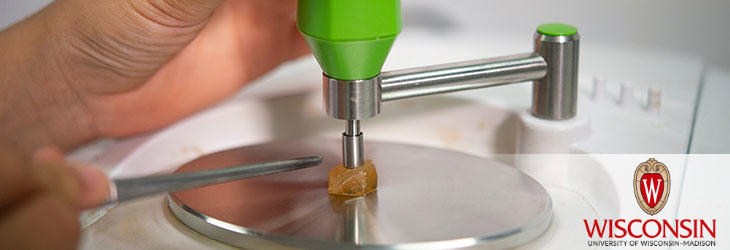Research Tools

More Efficient Ethanol Production from Mixed Sugars Using Spathaspora Yeast
WARF: P110227US02
Inventors: Thomas Jeffries, Tanya Long, Yi-Kai Su, Laura Willis
The Wisconsin Alumni Research Foundation (WARF) is seeking commercial partners interested in developing a method of cofermenting biomass xylose, glucose and other sugar mixtures for higher ethanol yields.
Overview
Ethanol obtained from the fermentation of grains and sugars is being blended with gasoline to bolster dwindling petroleum supplies. The alcohol increases combustion efficiency and octane value, and can be fermented from renewable corn cobs, stalks, cane and grasses. Still, it is essential that industry-scale production does not compete with food or push agriculture into forests and other vulnerable lands.
Clearly, efficiency is critical. One obstacle currently limiting renewable fuel production is glucose resulting from the hydrolysis process. Glucose can inhibit other important sugars like xylose, cellobiose and arabinose from being fully utilized during fermentation. Yeasts and bacteria have been engineered in an attempt to combat this problem, but a microbe that can coferment various sugars at high rates is still needed.
Clearly, efficiency is critical. One obstacle currently limiting renewable fuel production is glucose resulting from the hydrolysis process. Glucose can inhibit other important sugars like xylose, cellobiose and arabinose from being fully utilized during fermentation. Yeasts and bacteria have been engineered in an attempt to combat this problem, but a microbe that can coferment various sugars at high rates is still needed.
The Invention
UW–Madison researchers have developed a method for producing ethanol using Spathaspora passalidarum yeast to ferment xylose or cellobiose, even when mixed with glucose.
The ethanol is converted from biomass or other lignocellulosic material from agricultural residues, fast-growing hardwoods and processing byproducts. Sugars, lignin and other components are first extracted from this feedstock using standard methods to form mixtures rich in different sugars. The mixture is contacted with a Spathaspora yeast cell under oxygen-limiting conditions suitable to allow the yeast to ferment a portion of the xylose and/or cellobiose into ethanol.
The ethanol is converted from biomass or other lignocellulosic material from agricultural residues, fast-growing hardwoods and processing byproducts. Sugars, lignin and other components are first extracted from this feedstock using standard methods to form mixtures rich in different sugars. The mixture is contacted with a Spathaspora yeast cell under oxygen-limiting conditions suitable to allow the yeast to ferment a portion of the xylose and/or cellobiose into ethanol.
Applications
- Ethanol production
Key Benefits
- Cofermentation of mixed sugars
- Better rate and yield compared to other yeasts
- Efficient use of plentiful, renewable resources
- Spathaspora have minimal growth requirements.
- Production plants and equipment could be easily adapted to the method.
Publications
- Long T.M., Su Y.K., Headman J., Higbee A., Willis L.B. and Jeffries T.W. 2012. Cofermentation of Glucose, Xylose, and Cellobiose by the Beetle-Associated Yeast Spathaspora passalidarum. Appl. Environ. Microbiol. 78, 5492-5500.
Tech Fields
For current licensing status, please contact Jennifer Gottwald at [javascript protected email address] or 608-960-9854